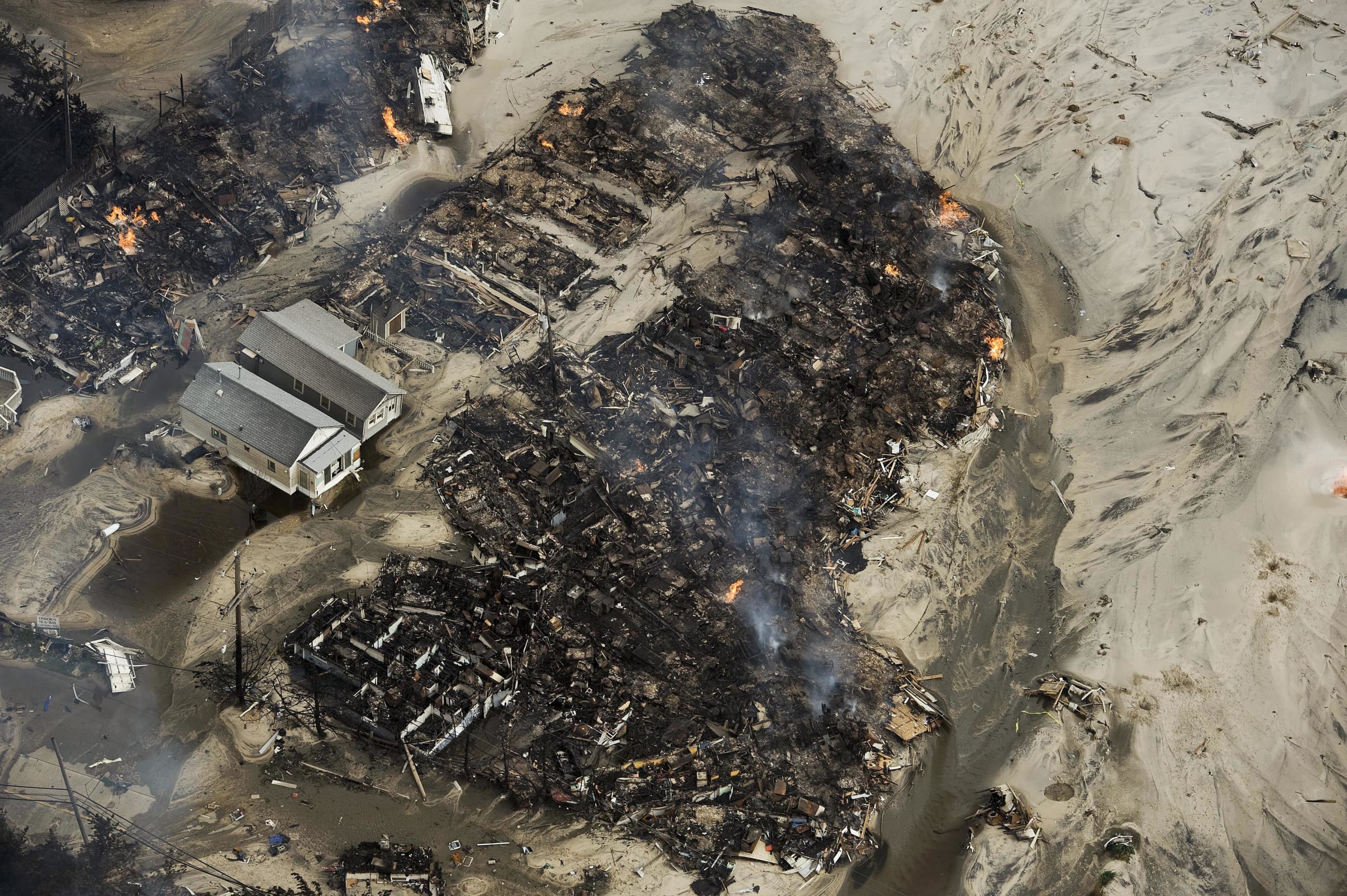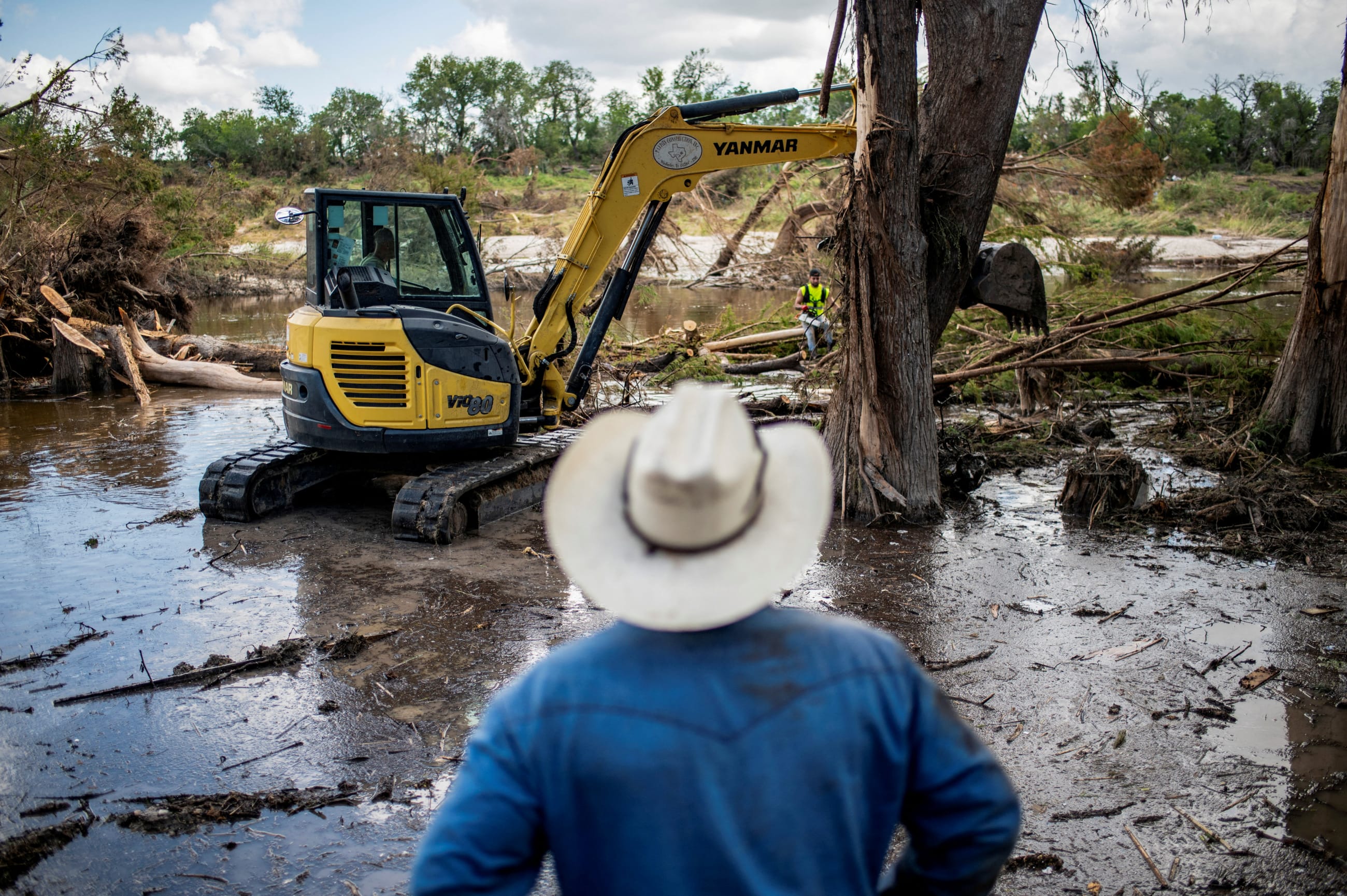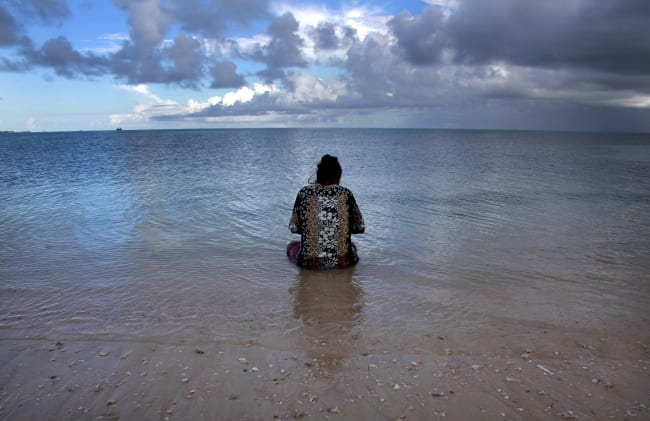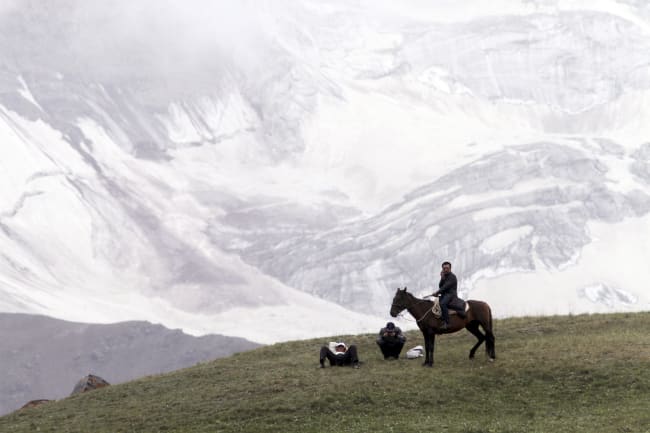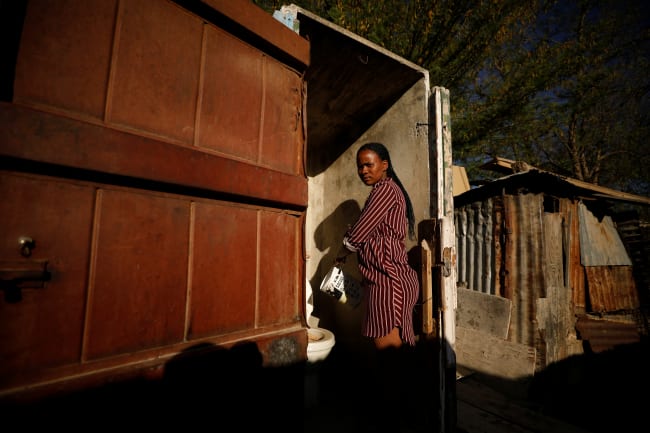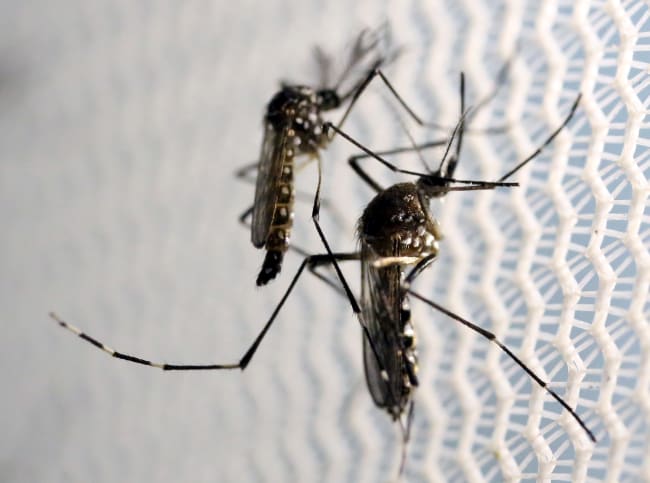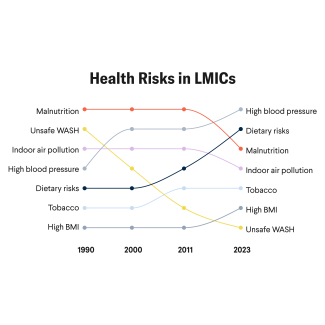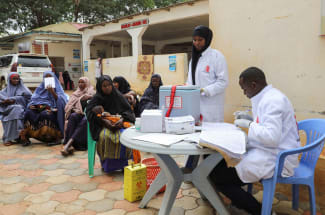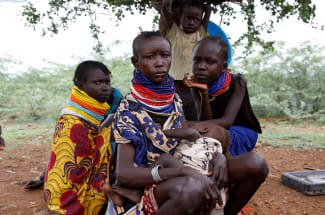This week marks three months since a July 4 torrent of rain and floods swept through Central Texas, killing at least 130 people, including 27 girls and counselors from the century-old Camp Mystic. Some parents continue to search for the bodies of loved ones; others urge the camp not to reopen. A new state law bans camp cabins from being in floodways.
As Atlantic hurricane season moves through its peak period of September and October, vulnerable U.S. states and territories are reflecting over natural disasters from earlier this year and mulling what their responses and recoveries could resemble with less federal support.
In the wake of the tragic July 4 flash floods along the Guadalupe River in Texas, President Donald Trump and Texas Governor Greg Abbott dismissed questions from reporters about how the disaster could have been prevented, and who was to blame. "Only an evil person would ask a question like that," Trump told a reporter during a July 11 roundtable event in Kerrville, Texas.
Yet these questions become more relevant as climate change worsens the frequency and intensity of extreme weather disasters, says Alice Hill, the David M. Rubenstein senior fellow for energy and the environment at the Council on Foreign Relations. While serving as senior counsel to the secretary of the U.S. Department of Homeland Security (DHS), Hill led the creation of the department's first climate adaptation plan. Run by DHS, the Federal Emergency Management Agency (FEMA) has faced funding cuts and staffing reductions as the administration realigns the agency's priorities, which could include dismantling its operations. Hill also served as special assistant to President Barack Obama and senior director for resilience policy on the National Security Council.
Disaster preparedness and resiliency are under threat as the federal government backs away from its traditional role in assisting states with emergency relief, Hill says. The Trump administration's budget cuts further reduce the capacity of federal agencies to assist states and local communities when disaster strikes. Think Global Health interviewed Hill about the key takeaways from the Texas floods and her top concerns about the changing nature of disaster preparedness in the United States.
□ □ □ □ □ □ □ □ □ □ □ □ □ □ □
Think Global Health: You specialize in the risk, consequences, and responses associated with climate change. Did what happened with the flash floods in Texas epitomize the intersection of those issues in some way?
Hill: This is a place that's had a history of many floods, but this event was consistent with climate-worsened flooding. The ferocity of the floods surprised people. People had built to what they thought was safe, considering what would have happened in the past. But with climate change, the past is no longer a reliable indicator for the future. Unfortunately, the terrible tragedy in Texas fits that pattern of greater damage and potential loss of life as a result of worsening events. It could be a flood, or it could be a wildfire, drought, heat, or storm surge from sea level rise. We should expect to be surprised, and we will have more and more surprising events.
Think Global Health: When it comes to natural disasters in general, how have powers and responsibilities between federal and state authorities traditionally been divided? Does that seem to be changing under the current administration?
Responses to natural disasters in the United States are locally executed and state managed
Alice Hill, Council on Foreign Relations
Hill: Responses to natural disasters in the United States are locally executed and state managed. When an event is too big for those entities to handle, it receives federal support. That's the model that has been developed over the last five decades.
More recently, involvement of the federal government in natural disaster relief has been huge. Now the Trump administration is attempting to roll that back to the states so that they are taking on more of the onus of the response. It's a political debate as to who should own that responsibility.
What is concerning about the Trump administration's approach, though, is the speed with which it's doing this. It's happening so quickly that states aren't prepared to be able to respond. They've been expecting the federal cavalry to arrive, and now the federal cavalry is saying, "We're not coming." So these state and local emergency managers are looking right and left, asking, "Who's going to help us?"
An additional challenge for them is that a lot of their emergency response funding comes from the federal government. Something like 90% of Texas's budget for emergency management has come from the federal government; Wyoming's has been 80%. If that is unplugged, then who's going to fund the local firefighters, who's going to drive the fire truck? We're in a moment when we may have some big events that are worsened by climate change, but we'll have a less robust response by the federal government yet the states and local communities aren't ready to fill that void yet.
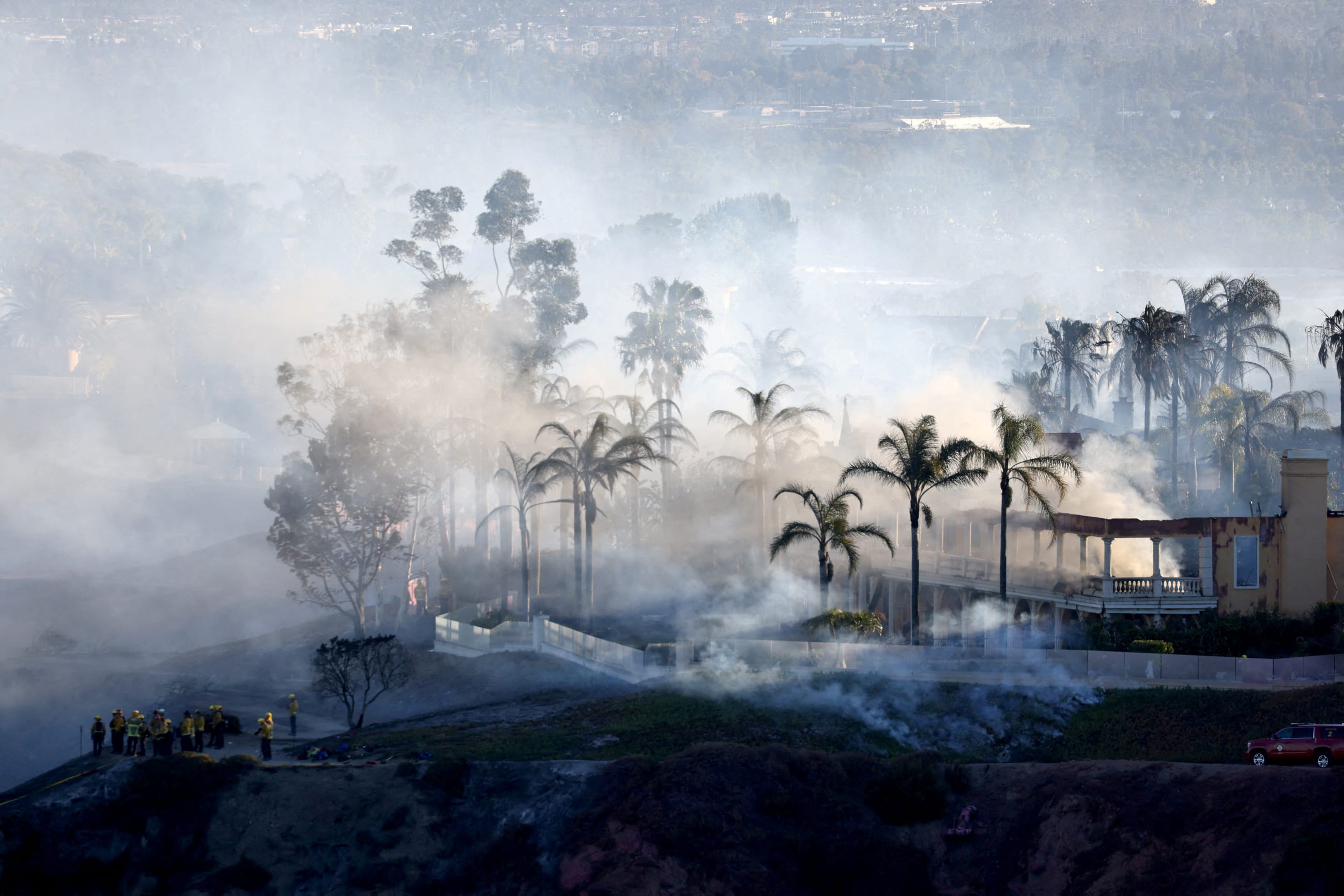
Think Global Health: Will these changes affect disaster communication, reaching people with emergency warnings? How has that traditionally been handled?
Hill: Communication is a multilayered structure. The weather forecasts typically have come from the National Oceanic and Atmospheric Administration (NOAA). Those are then disseminated by state and local emergency managers and officials. The best practice is to have many ways of getting warnings out. You don't want to rely on one system, because, as the flooding in Texas made clear, people might be asleep and have their phones turned off. That's why it's desirable, perhaps, to have sirens or people deployed to go door to door.
For all of this, though, you need to have accurate forecasts. That's come under challenge because so many meteorologists have left NOAA because of the proposed budget cuts by the Trump administration.
Think Global Health: How do communities typically prepare for an anticipated disaster, and again, whose responsibility is that?
Hill: So again, it goes up the line: local, state, federal. The local community or state could stockpile resources and can also have mass shelter capabilities. On the other hand, when people need to have shelter immediately, the federal government can bring that.
If a major event occurs, the federal government should be able to get to that area within 72 hours to provide some real assistance. Having different depositories ensures that the aid can get out faster.
The tragedy in Texas also revealed another area of preparation that needs work to make sure people are safe: where buildings are situated.
If a major event occurs, the federal government should be able to get to that area within 72 hours to provide some real assistance.
Alice Hill, Council on Foreign Relations
It's reported that Camp Mystic had argued that its buildings were not in harm's way from flooding typical of that area. FEMA issues flood maps, but they are not designed to be hazard-risk maps. The United States does not have a federal agency producing hazard-risk maps across the nation for all hazards.
FEMA's flood maps are designed for flood insurance but end up being used as hazard-risk maps, leaving communities and individuals to fight FEMA on whether their property is in or out of a flood area. The reason they do that is the mandatory requirement for flood insurance if you have a mortgage and you live in a designated flood area. So we have buildings in areas that were at risk of flooding.
Many of those flood maps, by the way, are out of date, and many do not include river rain or stream flooding, which can contribute to the fact that flash flooding comes as a surprise.
Think Global Health: Based on what happened in Texas, do you have any expectations or worries for this year's hurricane season, or for the general outlook for natural disaster preparedness and relief moving forward?
Hill: If there's any lesson here, it is that we should learn from these events and incorporate those lessons to best practices so we continually improve. Switzerland, for example, looks at every disaster and learns from that what worked and what didn't. Here in the United States, the federal government does After Action Reports, but they're not generally viewed as particularly helpful.
In my experience working at [DHS], it took quite a while for the report to be created after the event occurred, and there was sometimes concern that you don't want to embarrass any particular leader who may not look so good. So the reports did not get a lot of play.
In general, we don't look at disasters systematically to understand why they occurred and to make sure we don't make the same mistakes again. It's much needed that we have honest discussions about what went wrong and how we can improve, and then have some kind of requirement to improve.
